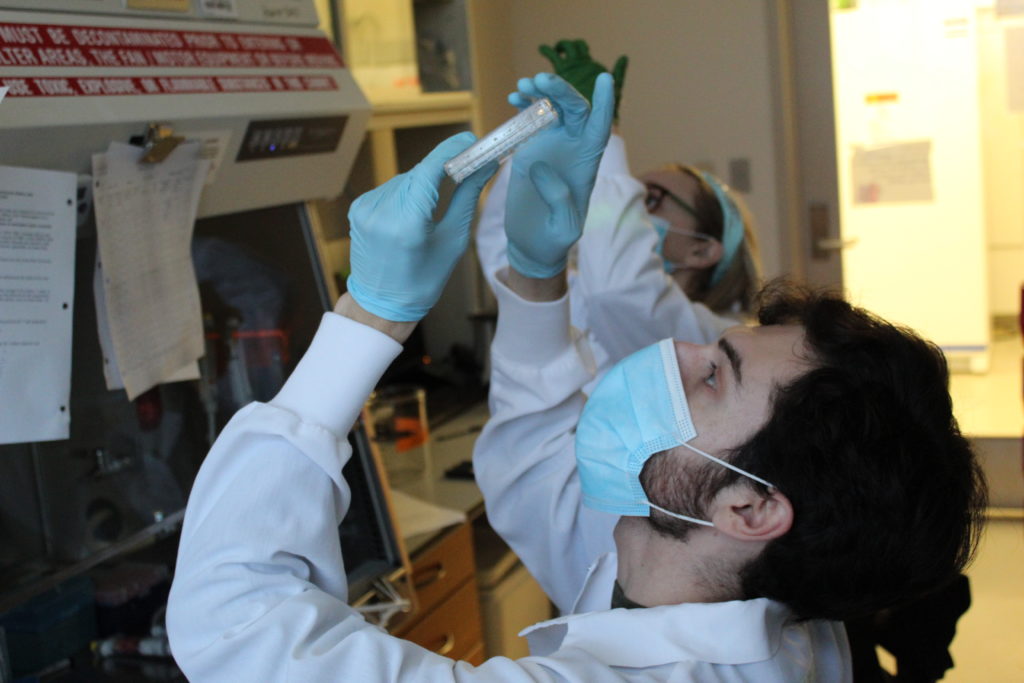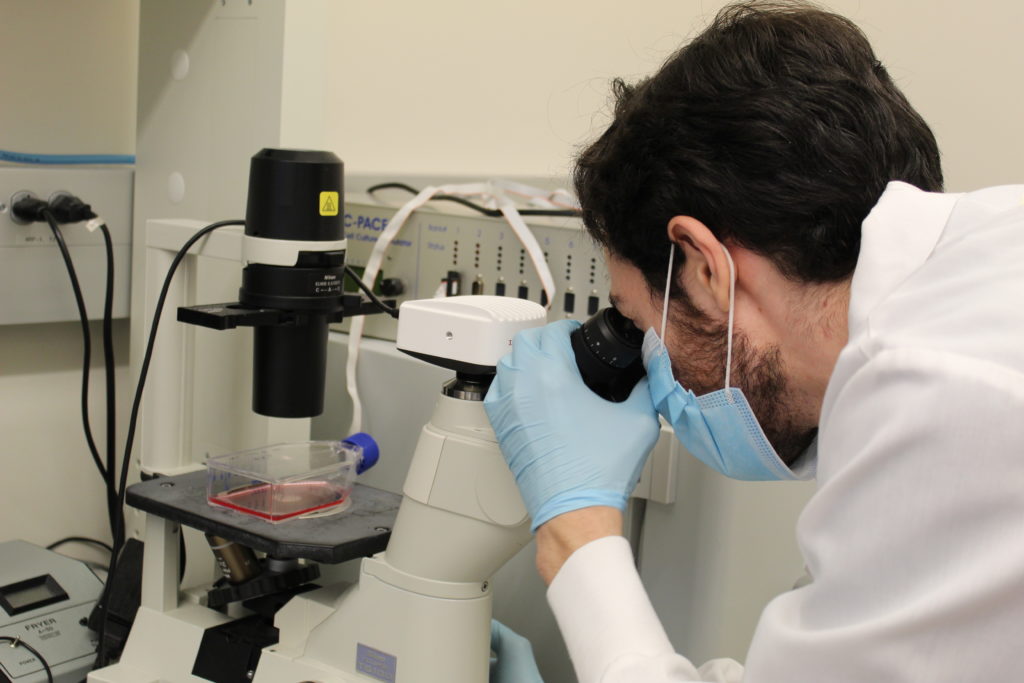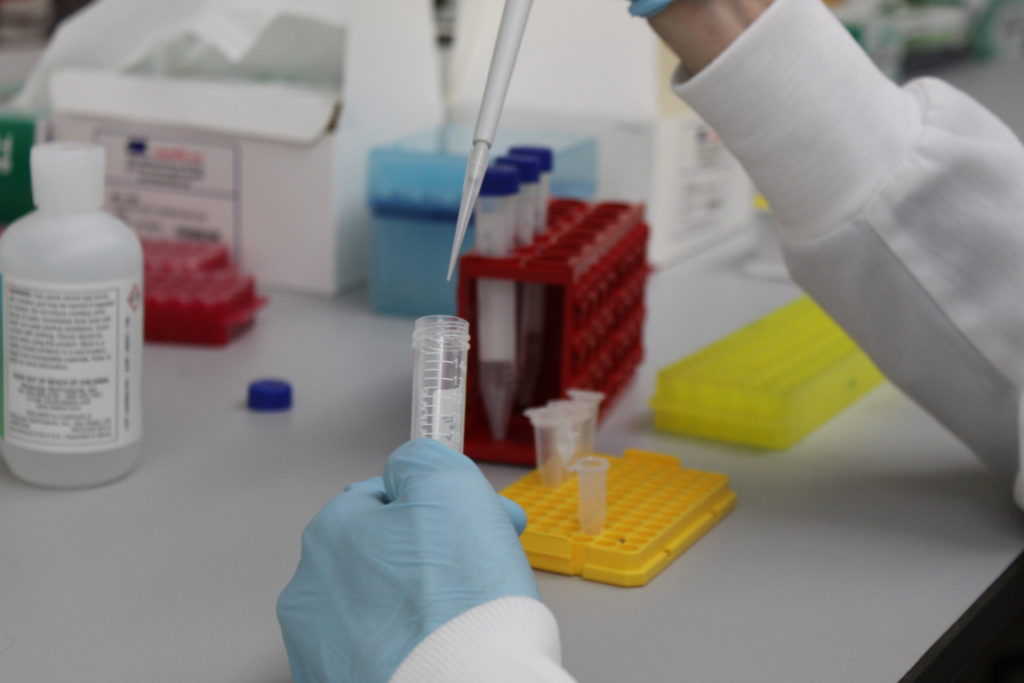
In the last decade, headlines surrounding the therapeutic potential of CRISPR have been dazzling the public. This revolutionary gene-editing technique has ignited the hopes of healthcare professionals and patients alike in tackling genetic diseases. However, the question remains: who will benefit from CRISPR and how soon? The Somatic Cell Genome Editing (SCGE) Consortium sponsored by the National Institute of Health is working collaboratively to answer this question, along with Krishanu Saha, professor of biomedical engineering at UW-Madison, who is co-chair of the SCGE consortium.
The CRISPR-Cas9 system is derived from bacterial pathways to resist external viruses, majorly consisting of guide RNA and Cas9 complex. Once the CRISPR-Cas9 system enters the cells, the guide RNA would locate the target DNA, and then the “editor,” Cas-9 enzyme, would cut the target DNA. “Researchers can simply replace the guide RNA for the specific target gene,” Saha says. “Compared to other genome editing techniques, CRISPR shows remarkable simplicity and modularity,” Saha says. “CRISPR’s high efficiency motivates a number of researchers around the world, and labs are working on various types of disease with their interest.”

On June 28, 2021, Intellia and Regeneron, the pioneering biotechnology companies in developing CRISPR genome editing, published the phase one clinical trial results of in vivo CRISPR therapy for the protein misfolding disorder ATTR. Researchers directly inject the CRISPR-Cas9 system to volunteer patients intravenously. For the first time, the clinical data indicate considerable efficacy and safety of in vivo CRISPR editing. Meanwhile, clinical trials in blood sickle disease, cancer, eye disease, and neuro diseases are also underway and show promising results.
Despite CRISPR’s safe and effective profile thus far, the clinical trials are still in the early stages, with a long road ahead to bring this technology to the public. With this in mind, the NIH launched the SCGE program, bringing together engineers, biologists, and clinicians to accelerate the process of bringing genome editing techniques to bedside therapeutics, with a significant focus on the CRISPR system.
“The common goal of the SCGE consortium is to apply genome editing technology to many types of disorders,” Saha says. “Not just in brains, livers, infectious disease, but any disease that might arise.”
The SCGE consortium includes labs across the U.S. and Canada. “One of our mandates is to share all data and tools as broadly as possible. We have a common toolkit,” says Saha. “If people have new applications in mind, for example, editing particular cells in lung for cystic fibrosis application, they might be able to go to the toolkit, find the editor that would address that particular sequence, and the delivery system that delivers the editor into the lung efficiently.” By sharing resulting data with the public, the SCGE consortium enables other researchers to make use of their already-developed tools, which reduces the time and cost in developing gene editing techniques.
To realize the high standards of efficiency, efficacy, and safety of gene editing tools required by the FDA, the consortium must overcome several technical challenges. First, it must improve the editor delivery system. How well the gene-editing tool performs depends largely on how well editors can reach the target genes without causing toxicity. The delivery systems most used in gene editing include viral vectors and nanoparticles, each with its own advantages and disadvantages.
“The viral vectors have additional risks, not only in immunogenetics potential when the body recognizes the capsid as a foreign protein, but also, the gene sequence of the virus can be integrated into human’s genome. For some cell types, it’s not a problem. However, in high doses, it has been considered a serious safety concern,” Saha says. “The beauty of having non-viral strategies, for nano-capsules in particular, is that its polymer coating can be degraded soon after the delivery system enters the cytoplasm. They will not lead to unexpected gene editing.” However, nano-capsules have limited space for editors, which hampers its ability to become an efficient delivery method. To find the most efficient and safe option for different diseases, the consortium has twenty ongoing projects to customize the delivery platforms.

The consortium is also working to reduce off-target effects, considered a salient safety concern of gene editing. “For CRISPR particularly, there are twenty bases in cell genome that researchers intend to cut out. However, there are frequent spots where there are nineteen, for instance, the same bases,” Saha says. “In such a case, editors would have both on-target and off-target cutting. The important task now is to understand the biological effects of off-target modification for a specific disease.”
The natural DNA repair mechanism of cells can also be problematic in gene editing therapy. Once the Cas9 complex cuts the DNA double strands, the cell’s innate DNA repair pathways can be triggered, generating genetic variances that could cause cancer. To avoid this, the consortium is further developing the CRISPR mechanism. Instead of using the Cas-9 enzyme, which is used to cut DNA strands, researchers attach another type of enzyme, which could change the single base on target DNA to edit the gene without breaking the DNA strands and inducing the DNA repair mechanism. The major challenge for this base editing technique is that the additional enzyme attached to the CRISPR system requires a larger delivery system, which is another bottleneck. “If it can be efficient enough, the base editing technique opens up a number of applications in cell types that are not amenable to traditional editing using DNA double strands break,” Saha says.
Considering the rigorous requirements for safety and efficacy, realizing the application of CRISPR as widespread therapeutics for disease still requires further efforts. As the SCGE consortium’s work increasingly steps on the public stage, it would arguably become strong momentum for the academics, industry, and other institutes to advance CRISPR. The joint efforts from all these organizations broaden the possibility for gene editing techniques in more and more treatment areas.

Photographs by James Ballard
